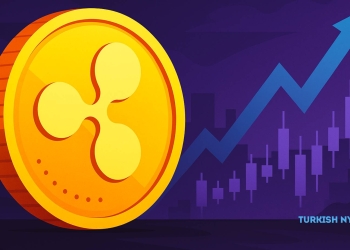MicroStrategy, under the leadership of Michael Saylor, is emerging as one of the largest players in the Bitcoin market and has created skepticism about the viability of its aggressive investment strategy and the likelihood of creating another Bitcoin bubble. This analysis looks into the strategy that MicroStrategy has used as well as its implications for its financial moves and the risks involved.
How MicroStrategy Funds Its Bitcoin Purchases
In fact, MicroStrategy has purchased Bitcoin for over $30 billion since 2020, making it the largest corporation to hold that cryptocurrency. This investment strategy turned out nice for the company, yielding well over $14 billion in paper profits, which more than sufficiently reflects Saylor’s assertion that Bitcoin is a far-superior asset class.
He is very famous for saying, “There is no second-best,” and that sinks the meaning: “Saylor devotes himself to Bitcoin as the premise of MicroStrategy.”
MicroStrategy planned on issuing convertible debt and equity to raise money. It has approached institutional investors, allowing them to buy bonds at little or no interest, with the option to convert them into MicroStrategy shares if the stock price goes up. It has raised billions and, at the same time, added to its holdings of Bitcoin.
So far, in 2024, the value of the company stock has jumped by about 500%. It is because the price of Bitcoin has jumped up this year considerably.
The Feedback Loop Between MicroStrategy and Bitcoin
As MicroStrategy borrows more Bitcoin, this creates a feedback loop: rising Bitcoin prices enhance MicroStrategy’s stock valuation, which allows it to raise more capital to purchase more Bitcoin. This cycle has led analysts to label MicroStrategy as a “Bitcoin treasury company” whose financial performance is directly tied to the volatility of the cryptocurrency.
And at times, MicroStrategy has purchased more than all of the Bitcoin ETFs put together. This brings up serious questions about manipulation and speculation surrounding MicroStrategy and Bitcoin.
Critics of MicroStrategy’s current strategy have drawn comparisons with historic speculative bubbles, referencing the infamous GBTC Premium Trade that has caused many investors enormous losses when conditions changed. They worry that MicroStrategy is currently using its position in such a way that might lead to huge losses if Bitcoin prices decline sharply.
Concerns About Speculation and Market Impact
At present, MicroStrategy is estimated to hold figures close to 387000 bitcoins worth $37 billion, whereas the market valuation of the company stands at more than $100 billion. There lies the catch, though; in such a case, a decline in the price of bitcoins can wipe off billions from the value of stocks in MicroStrategy.
If the investors start doubting the ability of the company to turn into a highly ambitious growth target that aims to raise $42 billion in the next three years, this could trigger a sell-off in both Bitcoin and MicroStrategy shares.
Some stories contain warnings from the old market bubbles in the past, such as the leverage of insanity punishment. Saylor, however, states that he would never sell his Bitcoin, but if those gains erode due to high debt obligations or external pressures, he might have to change course.
This comes close to what companies like FTX and Terra faced during their respective collapses when overconfidence in their business model could turn into worse consequences.
Risks Tied to MicroStrategy’s Bitcoin Strategy
Saylor’s undaunted conviction in Bitcoin may provide a sense of assurance to some investors, yet history has shown that markets do not continuously rise. The possible impact of a huge correction is felt widely over MicroStrategy’s aggressive stance; experts who worry about the implications of taking on so much debt in their volatile environment have expressed this.
Lessons from Past Market Bubbles
MicroStrategy’s rather bold approach to acquiring Bitcoin is unique in both the worlds of cryptocurrency and corporate finance. While it gets the company massive short-term gains and lucrative interests from investors, it’s highly questionable in sustainability and risk management.
In past times, it has been seen that over-dependence on leverage invites heavy price repercussions whenever the market dynamic changes. Investors have to consider weighing the potential rewards against all these risks as they take positions in MicroStrategy and Bitcoin during the increasingly speculative environment.
Follow TurkishNY Radio on Tumblr, Telegram, and LinkedIn.


























































































![BitTorrent [New]](https://s2.coinmarketcap.com/static/img/coins/64x64/16086.png)




















